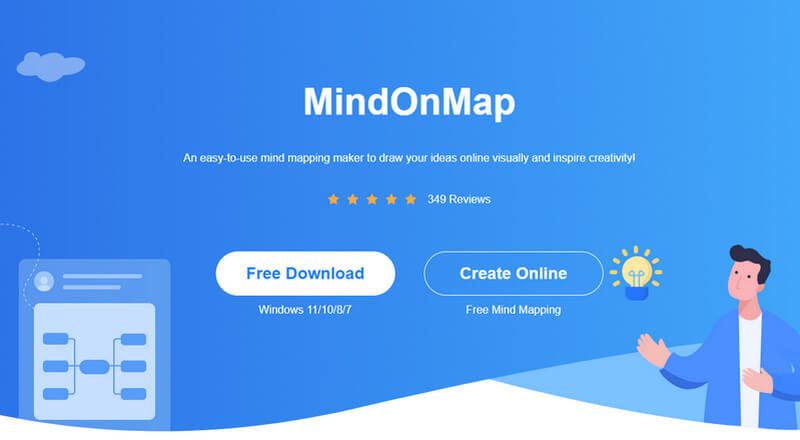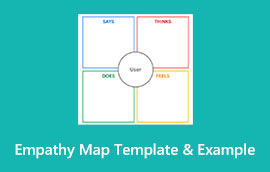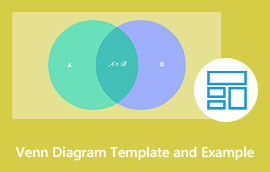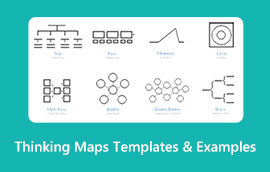Most Popular Examples of A Semantic Map
If you are a teacher or educator, there are times that you must teach your student about something, and you want them to understand what you are discussing. In this way, you can do a Semantic map. Semantic Mapping is the best way to organize your ideas. This way, you won’t get confused about your main and sub-topics, and you can discuss your topic with your students clearly.
Moreover, semantic mapping helps you recall and remember information, learn new concepts, improve creativity, and more. If you would like to get more knowledge about semantic mapping, this article will provide you with various semantic map examples. In addition, this post will give you the best application with detailed guides to create your semantic map. What are you waiting for? Read now, and create later!

- Part 1: 5 Popular Semantic Map Examples
- Part 2: How to Make A Semantic Map
- Part 3: FAQs about Semantic Map
Part 1: 5 Popular Semantic Map Examples
1. Space Semantic Map Example

In this example, the main idea or topic is Space. Then, it was divided into five categories: stars, planets, asteroids, the universe, and astronauts. Under these five types, they have another sub-category. As you can see, semantic mapping will help you brainstorm and get an idea about the different transportation you can use in air, land, and even water.
2. Types of Rock Semantic Map Example

The following example is about rock, which is the main topic. Then you must know the different types of rock. In addition, rock is easy to get and understand. However, it will be more challenging in terms of its different types. Therefore, the semantic map will help you expand your learning about it.
3. Bee Semantic Map Example

If you are a science teacher or an educator, this is another semantic map example you can use in your classroom. This way, your students will get an idea and understand your main topic. This example shows the characteristics of bees. It was divided into a few categories, and each category has the characteristics of the bee.
4. Fruits Semantic Example Map

Many people, like students, can learn about different common fruits from this map. It helps students understand almost all fruits. Also, the map tells the taste of each fruit. This way, students will understand the fruits and their tastes.
5. Car Semantic Map Example

This example makes your student understand the car. It illustrates the essential things to remember in vehicles like cars, such as the window, tire, and driver. Also, these three categories have their sub-category, which is also important.
Part 2: How to Make A Semantic Map
Using MindOnMap
As you can see, the different semantic map examples above will give you enough idea of how you will organize information, divide your main topic into categories, and more. In this part, we will help and guide you on how to create a semantic map using MindOnMap.
MindOnMap is an excellent application for making different maps and diagrams, including semantic mapping. This application is totally free, so you don’t have to worry about a subscription. In addition, it has many ready-to-use templates you can use. It also has a friendly interface, which makes it easy to utilize even for a beginner. You can also put different shapes on your semantic map to make it more understandable and unique. It provides more themes, styles, clip art, and more.
Furthermore, through MindOnMap, you can do more things, such as relationship maps, article outlines, travel guides, project management, life plan, and more. Lastly, You can instantly export your mind maps to PNG, PDF, SVG, DOC, JPG, and more, for further preservation. Let’s start by creating your semantic map using MindOnMap.
Visit the MindOnMap website. Then, click the Create Online button. Or you can click the Free Download button below. You must create an account for MindOnMap. You can also connect your email to it.

Click the New button and select the Flowchart.

You can use the different shapes by clicking the shapes section to make your semantic map with your topic. Also, you can put some color in the shapes to make them unique and attractive by clicking the fill color tool.

When you are done creating your semantic map, click the Export button or the Save button to keep your semantic map. Also, you can save your map on your computer and MindOnMap account.

Using Visme
Visme is another online mind mapping tool you can use if you want to create a semantic map. It is an easy-to-use application with a friendly interface. In addition, it has many features you can enjoy, such as easy drag and drop tools, hundreds of thousands of icons and pictures, and many free ready templates. This online application allows you to create your semantic map easily and instantly. However, the free version of Visme has a limitation. You can only access 100MB of storage. To experience wonderful features from this application, you must purchase a subscription. Follow these simple steps below if you're going to create a semantic map by using this application.
You must visit the Visme website. Then, click the Create your Concept Map button. After that, you must sign up or connect your email account to have a Visme account,

If you are done creating your account, click the Infographics button. Then, you can choose some templates below to create your semantic map.

You can now create your semantic map by editing the given templates. You can also use some shapes to add. You can also remove some shapes from the given templates.

If you are satisfied with your semantic map, the last step you can do is to click the Download button. You can download it on your Visme account and your desktop.

Part 3: FAQs about Semantic Map Examples
What is a Semantic Map?
Semantic Map also considers a graphic organizer. The purpose of it is to display the meaning-based connections of phrases, words, concepts, etc. In addition, A semantic map includes the main idea in the center. It has related categories that are connected with the main topic. This way, you can understand the overall topic.
What are the other examples of a Semantic Map?
The other examples of semantic maps are Bubble maps, Tree maps, Modified ven, Bracket maps, Problem-solving maps, and more.
What are the purposes of making a Semantic Map?
There are many purposes for creating a semantic map. These are:
1. To build vocabulary and concepts.
2. To master the topic and subtopics.
3. To display biographies.
4. To organize ideas.
5. To have an understandable and creative presentation.
Conclusion
These are the five most popular semantic map examples. Moreover, this article provided the two best ways to create your semantic map using online applications. But if you want an excellent application to create a unique and creative semantic map for free and easily, use MindOnMap.










